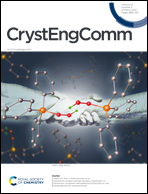A microcrystal method for the measurement of birefringence
Abstract
Based on the interference principle, a special test process to measure polycrystalline birefringence was proposed and confirmed as an effective method for screening anisotropic micro-crystals. In this process, an innovative automatic mesh sieve was designed and applied to sieve the crystal particles of Al2O3, SiO2, KDP, LBO and BBO. Each crystal was accurately divided into four thickness ranges of 23–38 μm, 38–53 μm, 53–90 μm, and 90–150 μm experimentally, and the polarization interference method was employed to measure the birefringence of the samples. Results showed that, when the thickness of the crystal particle was taken as the intermediate value of the mesh width in the range of 38–53 μm, the experimental value of the birefringence of the crystal particles on a small scale was closest to that of the large crystals.



 Please wait while we load your content...
Please wait while we load your content...